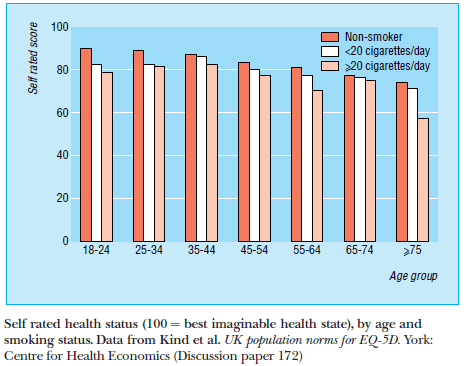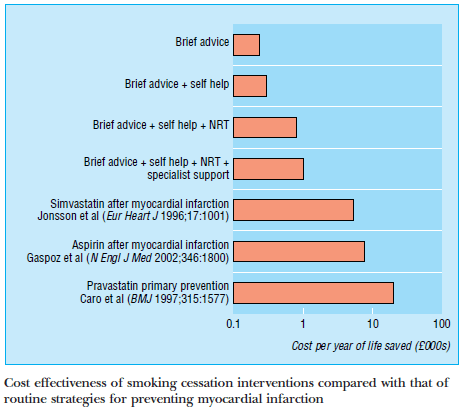I was prepping over the weekend for a meeting Wednesday on the economics of tobacco control and ran across this very clear brief from the British Medical Journal that I thought was worth highlighting. Many of the health benefits of cessation accrue via life extensions, but they point out the morbidity differences by smoking status (measured by self rated health). Precise measurement of the morbidity benefits of cessation is likely important for continued cessation success (the chart below is cross sectional and doesn’t show changes). Communicating the benefits of cessation in different forms and formats maximizes the chance that change will be initiated.
More to the point, the article nicely lays out the cost effectiveness of simple smoking cessation interventions in terms of the cost of a life year saved as compared to common strategies to prevent heart attack.
The paper notes the following caution:
Care should be taken when extrapolating the results of these evaluations, as cost effectiveness estimates are likely to be time and country specific and highly dependent on the healthcare system in question. In a system of fee for service, as in the United States, monetary rewards may be necessary to encourage provision. On the other hand, if patients who stop smoking place a reduced burden on the primary care budget in future years, the incentives to provide such services may be inherent in the system.
While I don’t think I would describe the U.S. health care system (systems?!/non-system?!) as being simply fee for service, that helps to underline their point that precise estimates of the costs and benefits of smoking cessation are needed for each nation and likely sub-population to best target smoking cessation strategies. Smoking cessation is an old problem that remains a top public health priority. The CDC has declared tobacco to be a “winnable battle” and there is much work to do in this area.



